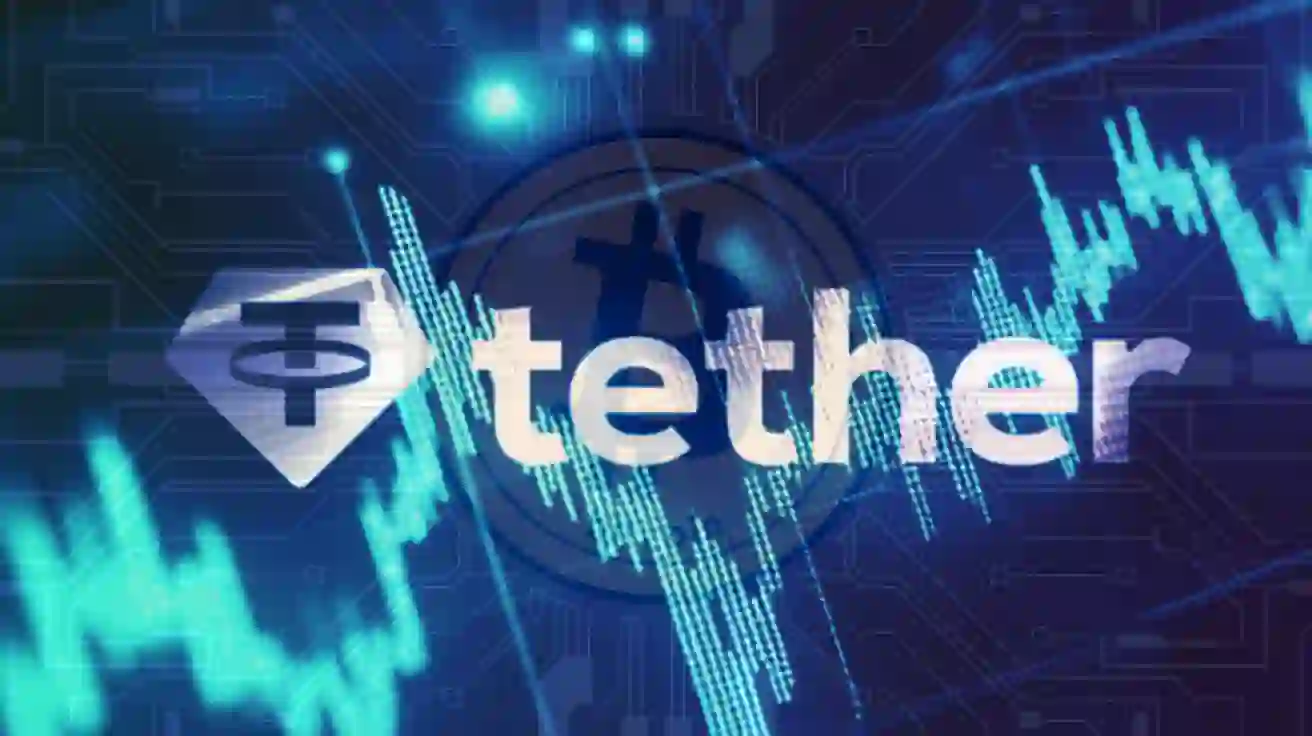Introduction
Tether (USDT) is a type of cryptocurrency known as a stablecoin, designed to maintain a steady value by pegging its price to the U.S. dollar. Unlike other cryptocurrencies, which can experience extreme price fluctuations, stablecoins provide a reliable digital asset for traders, investors, and businesses. Tether’s USDT token is the most widely used stablecoin in the crypto market, with a record-breaking market capitalization of over $83.6 billion as of May 2023.
Despite its success, Tether has faced scrutiny regarding its claims of being fully backed by cash reserves. In this article, we will explore the origins of Tether, how it operates, its advantages, controversies, and what the future holds for this dominant stablecoin.
What Is Tether (USDT)?
Tether is a stablecoin designed to provide stability in the volatile cryptocurrency market. It was created to function as a bridge between traditional fiat currencies and digital assets. The primary goal of Tether is to maintain a 1:1 peg with the U.S. dollar, meaning that for every USDT in circulation, there should be an equivalent dollar held in reserve. This ensures that traders can seamlessly move in and out of cryptocurrencies without the price volatility associated with assets like Bitcoin and Ethereum.
Tether was first launched in 2014 under the name “Realcoin” before being rebranded as Tether. The company behind the stablecoin, Tether Limited, operates under the jurisdiction of the British Virgin Islands but has its headquarters in Hong Kong. Tether is closely associated with Bitfinex, one of the largest cryptocurrency exchanges in the world, sharing much of its management team.
How Tether Works
Tether’s functionality is straightforward:
- Users deposit U.S. dollars into Tether’s reserve accounts.
- Tether Limited issues an equivalent amount of USDT tokens.
- USDT tokens can be transferred, traded, or stored like any other cryptocurrency.
- When users wish to redeem their USDT for cash, Tether Limited removes the tokens from circulation.
Tether was initially issued on the Bitcoin blockchain via the Omni Layer but has since expanded to Ethereum (as an ERC-20 token), Tron (TRC-20), and several other blockchains. This allows for greater flexibility and faster transactions across different blockchain networks.
The Rise of Tether
Tether’s adoption has been explosive. In just a few years, it has become the third-largest cryptocurrency by market capitalization, commanding 7.5% of the total crypto market. Its rise can be attributed to several factors:
- Liquidity: Tether is the most traded cryptocurrency by volume, often surpassing Bitcoin.
- Market Utility: Many crypto traders and exchanges use USDT as a stable medium of exchange.
- Ease of Use: Unlike traditional fiat transfers, Tether transactions are instant and borderless.
- Avoiding Fiat Restrictions: Some crypto exchanges do not support direct fiat deposits, making USDT a practical alternative.
What Makes Tether Unique?
1. Stability and Fiat Pegging
Tether’s primary selling point is its ability to maintain a stable value. This makes it an ideal choice for traders who want to escape market volatility while remaining within the crypto ecosystem.
2. Wide Acceptance
USDT is one of the most widely accepted cryptocurrencies, available on nearly all major exchanges. It is used for trading pairs, payments, and even decentralized finance (DeFi) applications.
3. Familiarity
Because USDT is pegged to the U.S. dollar, it is intuitive for users to understand its value, making it more accessible to newcomers in the crypto space.
Controversies Surrounding Tether
Despite its widespread use, Tether has been the subject of several controversies and legal challenges.
1. Questions About Reserves
Tether Limited has long claimed that each USDT is backed by one U.S. dollar. However, critics have questioned whether the company has sufficient reserves. In 2021, Tether disclosed that only about 3% of its reserves were held in actual cash, with the majority consisting of commercial paper, secured loans, and other assets.
2. Legal Issues and Investigations
In 2019, the New York Attorney General (NYAG) accused Tether and Bitfinex of covering up an $850 million loss by misusing Tether’s reserves. In 2021, the companies settled the case for $18.5 million and agreed to stop operating in New York.
3. Market Manipulation Allegations
Research studies have suggested that Tether may have been used to manipulate the price of Bitcoin, particularly during the 2017 bull run. Some analysts argue that USDT was printed without sufficient backing and used to inflate Bitcoin’s value artificially.
The Role of Tether in Crypto Markets
Despite the controversies, Tether remains a critical component of the cryptocurrency market. It serves as a stable trading pair, providing liquidity to exchanges and facilitating cross-border transactions. Many investors use USDT as a safe haven during market downturns, and its high trading volume ensures that it remains a vital part of the ecosystem.
It's sort of funny hearing people claim that you can't create/redeem USDT for $.
Like, I don't know what to tell you, you can, and we do. https://t.co/8XthTsk1xr
— SBF (@SBF_FTX) January 12, 2021
A Timeline of Tether’s Growth
- July 2014: Realcoin launches as a dollar-backed token.
- November 2014: Rebranded as Tether (USDT).
- January 2015: Bitfinex lists USDT.
- December 2017: Tether supply surpasses 1 billion tokens.
- April 2019: NYAG sues Tether for misusing reserves.
- July 2020: Market cap hits $10 billion.
- May 2021: Tether reveals its reserve breakdown.
- May 2023: Tether’s market cap surpasses $83.6 billion.
How to Use Tether
1. Trading and Investing
USDT is a preferred stablecoin for traders looking to hedge against crypto volatility. It is available on nearly all crypto exchanges and is used in various trading pairs.
2. Payments and Transfers
Businesses and individuals use Tether for fast, low-cost transactions. It is particularly useful for international payments where traditional banking systems may be slow or expensive.
3. Decentralized Finance (DeFi)
USDT plays a crucial role in DeFi applications, including lending platforms, yield farming, and decentralized exchanges (DEXs).
The Future of Tether
Tether’s future depends on its ability to maintain market confidence. If it can continue to prove its reserves and withstand regulatory scrutiny, it is likely to remain the dominant stablecoin. However, increased competition from other stablecoins, such as USD Coin (USDC) and Binance USD (BUSD), could challenge its position.
Moreover, regulatory agencies worldwide are tightening their oversight of stablecoins. Future regulations could impose stricter transparency and reserve requirements, impacting Tether’s operations.
Conclusion
Tether (USDT) has established itself as the most significant stablecoin in the cryptocurrency market, providing liquidity, stability, and ease of use. However, it has also faced substantial controversy regarding its reserves and transparency. As the crypto industry evolves, Tether must adapt to regulatory changes and maintain its credibility to secure its place in the financial world.
For now, Tether remains a cornerstone of the crypto economy, but its long-term survival will depend on continued trust and compliance with financial regulations.



